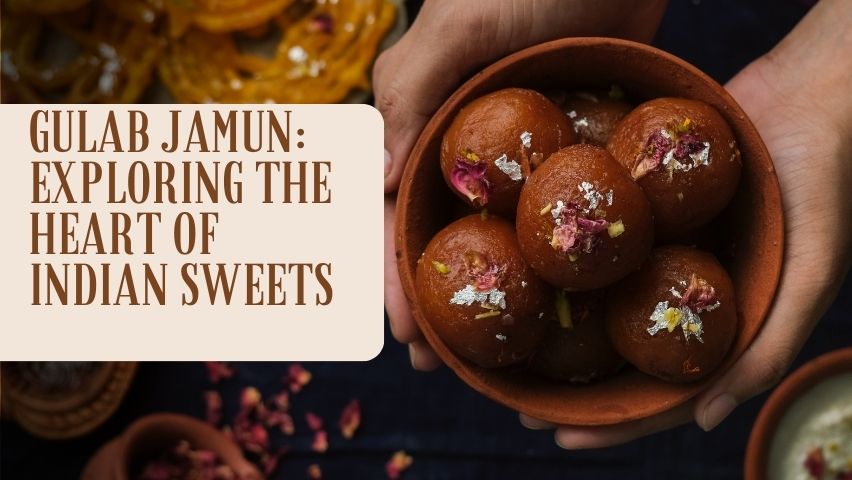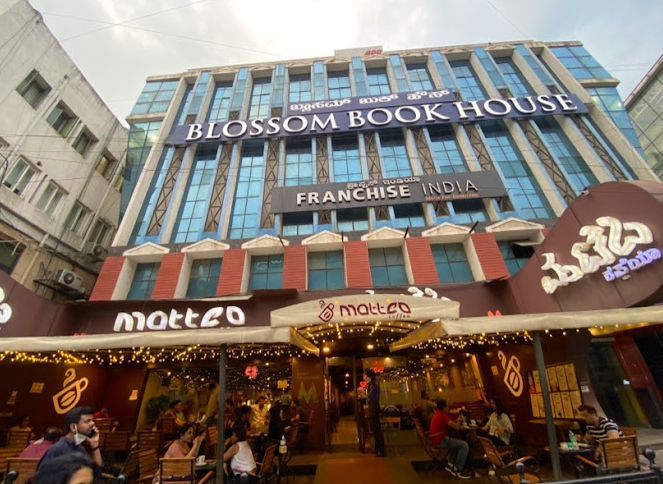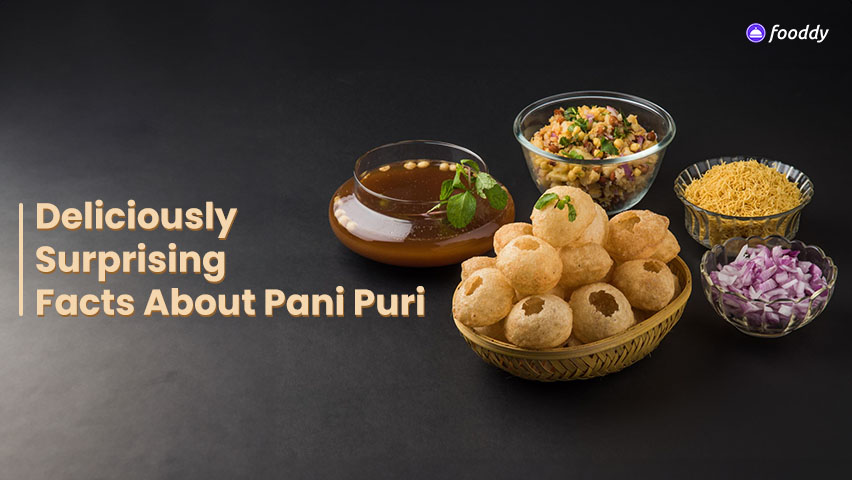Pani Puri, the beloved street food of India, is a tantalizing explosion of flavors that awakens the taste buds and leaves an everlasting impression. But beyond its mouthwatering appeal, this popular snack holds a host of surprising facts waiting to be discovered by food enthusiasts. This delightful snack holds a wealth of pani puri information waiting to be discovered. From its humble origins as a simple roadside delicacy to its ingenious combination of crispy puris and tangy fillings, Pani Puri has evolved into a cultural phenomenon that showcases the creative genius of Indian cuisine. Join us on a journey filled with interesting facts about biryani and explore how Pani Puri facts and information about pani puri or panipuri information that continues to captivate millions.
Fun Facts About Pani Puri: Did you know?
- Pani puri, also known as golgappa or puchka, is a popular street food in India enjoyed by people of all ages. But did you know that it has different names of Pani Puri in various regions? In Maharashtra, it’s called pani puri, while in Gujarat, it’s known as pani ni bateta and in West Bengal, it goes by the name puchka. This variety showcases the pani puri chana name in English, often referring to the chickpeas used in the fillings
- While the most common filling for pani puri is spicy mashed potatoes and chickpeas, there are actually many variations of this delicious snack. Some vendors offer fillings like yogurt, sprouts, ragda (a spicy curry), or even finely chopped fruits. So next time you have pani puri cravings, don’t be afraid to experiment with different fillings! Each vendor adds their twist, so it’s essential to explore the myriad flavors about Panipuri.
- Ever wondered why the hollow puris used for pani puri stay crisp even when filled with various ingredients? The secret lies in their preparation! The dough used to make these crispy shells contains semolina and sometimes baking soda or yeast. When deep-fried at the right temperature, they become light and airy on the inside while maintaining their crunchiness on the outside.
History: Origins and Evolution of Pani Puri Facts

1. The Origins: India’s Street Food Treasure
The origin of Pani Puri is believed to trace back to the ancient region of Magadha, now part of modern-day Bihar, where it was first crafted as a simple yet flavorful snack called “phulki. Pani Puri originated from which state? The answer takes us back to the ancient kingdom of Magadha in present-day Bihar, where it first emerged. It originated around 500 BC and was initially called phulki which means crisp. Over time, it evolved into the iconic dish we know today. Pani Puri is famous in which state? While it is loved all over India, it holds special popularity in Maharashtra, where it’s widely known and cherished as a go-to street food. Interestingly, despite its humble beginnings, pani puri history gained popularity among all classes of society and became synonymous with street food culture across the country. This history of pani puri showcases its journey through time and its pani puri origin.
2. The Evolution: From Simplicity to Variety
What started as a simple snack made from wheat flour dough filled with spiced mashed potatoes and tangy tamarind chutney has undergone a fascinating evolution over centuries. Today, pani puri comes in numerous variations with an array of fillings like chickpeas, sprouts, paneer (Indian cottage cheese), and even fruits. The pani puri benefits go beyond taste; the ingredients contribute to its nutritional value. Moreover, the flavors of the spicy water used to drench the hollow puris have expanded beyond traditional mint and tamarind to include options like pineapple or mango! This adaptability is what makes pani puri such a favorite among foodies – there’s something for everyone’s taste buds!
3. Modern-Day Influence: Innovations and Global Popularity
In recent years, pani puri has not only captivated hearts within India but has also garnered international acclaim as a must-try street food delicacy. The Pani Puri taste varies from region to region, making it an exciting experience for food lovers worldwide
The Ingredients: An Explosion of Flavors
The beauty of Pani Puri lies in the burst of flavors that explode in your mouth with every bite. This popular Indian street food is a delicate masterpiece, combining diverse ingredients that take you on a tantalizing culinary journey. The key components include crisp semolina or wheat puris, tangy tamarind chutney, and spicy mint-coriander water.
One might think that the star of the show is the crispy puris, providing a satisfying crunch as you delve into this delightful snack. However, it is the harmonious blend of different chutneys that truly steals the spotlight. The contrasting tastes and textures create an explosion of sweet, sour, and spicy notes that dance together on your taste buds.
Speaking of explosions, let’s not forget about the spiced water known as ‘pani,’ which adds an invigorating kick to each Pani Puri experience. Infused with aromatic spices such as cumin, black salt, and chaat masala, this flavorful concoction brings an unexpected zing to your palate. It awakens your senses and amplifies the overall taste profile of this beloved street food treasure.
Check this out: Top 10 Interesting Facts About Vadapav, You Should Know in 2024
Regional Variations: Unique Twists Across India
When it comes to food, any discussion about India is incomplete without mentioning its rich regional variations. Each region of India boasts its own unique culinary traditions and flavors, making the country a paradise for food lovers. From the spicy Chettinad cuisine of Tamil Nadu to the hearty delicacies of Punjab, there’s something to tantalize every palate.
One such dish that showcases the diverse culinary landscape of India is Pani Puri. While it might be known by different names in different parts of the country – Golgappa, Puchka, or Phuchka – one thing remains consistent: this delectable street food is loved nationwide. However, what truly sets each variation apart is the filling inside the crispy puri shell. In Mumbai and Ahmedabad, you’ll find a combination of mashed potatoes and sprouts; in Kolkata, it’s a mix of boiled chickpeas and tamarind chutney; whereas in Delhi, you’ll often encounter a tangy blend of kala chana (black gram), boondi (tiny fried chickpea balls), and yogurt.
These regional twists not only add variety but also reflect the cultural diversity that exists across India. They show how cooking styles can vary from state to state, city to city—and even from one street vendor to another within the same locality! Exploring these regional variations not only satisfies our taste buds but also offers us an opportunity to delve deeper into Indian culture through its vibrant culinary heritage.
Must see: Gulab Jamun: Exploring the Heart of Indian Sweets
Health Benefits: Surprising Nutritional Value
Pani Puri, also known as Gol Gappa or Puchka, is undoubtedly one of the most popular street foods in India. Bursting with flavors and textures, this classic snack consists of crispy puris filled with a tangy tamarind chutney and a spicy mint water. While it may be loved for its incredible taste, what many people don’t realize is that Pani Puri actually offers some surprising health benefits.
Firstly, the main ingredient of puris is usually whole wheat flour or semolina, which provides an excellent source of complex carbohydrates. These carbs are not only essential for providing energy but also help maintain healthy digestion and keep you feeling fuller for longer. Additionally, the diverse range of ingredients used in the chutney, such as tamarind and coriander leaves, offer impressive nutritional value. Tamarind is a great source of antioxidants and can aid in digestion and reduce inflammation while coriander leaves are packed with vitamins A, C, and K.
Furthermore, Pani Puri’s signature element – the flavorful mint water – brings along its own set of health benefits. Mint has long been recognized for its medicinal properties including soothing indigestion and boosting immunity. The refreshing combination of fresh mint leaves blended with spices like cumin and black salt not only adds delicious complexity to each bite but can also contribute to improved digestion and respiratory health.
Conclusion
In conclusion, Pani Puri facts stands as a actual testament to India’s rich culinary records, mixing traditional flavors with modern-day-day twists that maintain to captivate food enthusiasts across the globe. Its evolution from humble road snack to a preferred worldwide delicacy highlights the creativity and versatility of Indian delicacies. Just like momos origin, which hails from the Tibetan area but has turn out to be a popular snack in India, Pani Puri’s adventure displays how meals transcends borders and cultures. Whether you are gambling its crisp puris filled with tangy water or experimenting with nearby versions, Pani Puri remains an impossible to withstand address for anybody






























